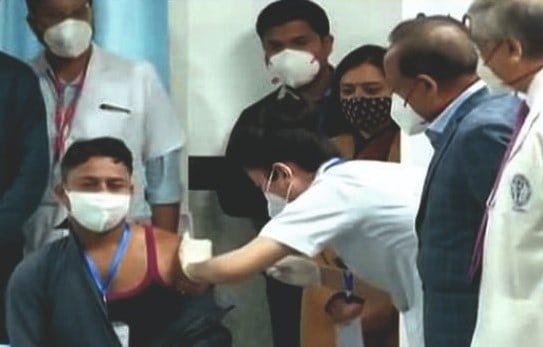Twitter pulled up by Parliamentary panel
Global social media giant Twitter has been engaged in a deadlock with the government over the new IT rules for the past few months. Summoned by the Parliamentary Standing Committee on Information Technology headed by Congress MP Shashi Tharoor, the panel has asked Twitter for a written reply to a set of questions. The microblogging site has been dragging its feet in complying with the provisions of the new IT rules. Standing committee members made it clear to Twitter that the law of the land is supreme.
Twitter, on its part, remained non-committal on any timeline and only said that it “was prepared to work the committee on safeguarding citizens’ rights online in line with our principles of transparency, freedom of expression and privacy”. The panel will further question the social media company on the prevention of misuse of the content even as BJP members accused Twitter of bias, saying that their fact checkers were more inclined to blame the party instead of fighting fake news. In fact, the Ghaziabad police has filed an FIR against Twitter for inciting communal sentiments.
Source: The Hindu
30:30:40 formula for 12th board results, SC approves
In a new development on June 17th, the SC has approved the 30:30:40 formula for deciding the result of 12th class, pending due to the ongoing pandemic. As per the new formula, 30% weightage will be for results of class 10th, 30% weightage for the results in class 11th and 40% weightage to unit tests, mid-term and pre-board exams in class 12. Those who feel unsatisfied with the result may appear for a written exam which will be conducted when the situation eases. For practicals, the actual number uploaded by the schools on the CBSE portal will be taken into account. The CBSE has also directed schools to constitute a committee under the chairmanship of the principal and two senior postgraduate teachers from the same school and two postgraduate teachers from neighbouring schools. The committee will declare results as per the policy in July.
Source: The Hindu
Scientific rationale behind increasing the gap between doses: Govt.
Dr N.K. Arora, Chairman of COVID-19 Working Group of the National Technical Advisory Group on Immunisation (NTAGI), said that government’s decision to increase the gap between two doses of Covishield was based on science. The interval of 12 weeks has shown an efficacy to be ranging between 65% to 88% according to one study, Dr Arora added. The decision on a four-week gap was based on trial data available till then. The government is also developing a vaccination tracking platform – to track the vaccine type, interval between doses, it’s effectiveness and other micro details. Dr Arora also said that if in future the platform suggests that decreased interval is important from the public health point of view, the government will decrease the gap, because processes are very dynamic with COVID-19.
Dr Arora also cited two studies by PGI Chandigarh and CMC Vellore. The PGI study highlighted that Covishield offered 75% efficacy both with partial and full vaccination. Whereas the CMC Vellore study suggested Covishield’s efficacy to be 61% with one dose and 65% with two doses.
Source: The Hindu
Read more: COVID vaccination: Expert agrees with ‘First dose fast’ policy
Health ministry refutes social media posts on newborn calf serum
After social media posts alleging that Covaxin contains the serum of a newborn calf started going viral, it was immediately red flagged to Union Health Ministry, which didn’t waste any time in addressing the issue. The ministry released a detailed note to refute the fake news. The release said that globally, different kinds of animal serums are used during the initial manufacturing stages of the vaccines. However, the raw product does not contain any such animal product. Also, the technique has been used earlier in vaccines for polio, rabies, influenza etc, the release pointed out.
Source: The Hindu
Gurgaon becomes first urban district to vaccinate more than 50% population with the first dose
As per recent data, Gurugram has become the first urban district to vaccinate more than 50% of its population, 52% actually, with at least first dose of the vaccine. Though the percentage of population with double dose remains low at 10.4%. As per UIDAI, the district’s population is estimated to be 17,40,740 out of which more than nine lakh people have received the first dose. Indore (49.2%) and Kolkata (46.1%) is at number two and three position.
Source: Swarajya
Chandni Chowk to be a non-motorized zone from 9 AM to 9 PM on all days
As per a government notification released on June 14th, the current redevelopment zone of Chandini Chowk has been designated as a non-motorized transport zone where no vehicles will be allowed from 9 AM to 9 PM. The 1.3 Km stretch is currently undergoing redevelopment and was scheduled to be completed by November 2020 but was delayed due to Coronavirus crisis.
Read more: Chandni Chowk, from Shah Jahan to Kejriwal
The above restriction will not apply to emergency service vehicles such as fire tenders, ambulance etc. The estimated cost of the Chandni Chowk beautification project, being implemented by the Kejriwal government, is estimated to be Rs. 99 crore.
Source: NDTV
Also read:
- Bengaluru Buzz: Plan to axe 6,316 trees | Petrol price over Rs 100 | CCCs shutting down
- Chennai Buzz: Special teams to combat COVID | TASMAC reopening creates issues | New pedestrian plaza…and more
- Mumbai Buzz – Children blinded due to Black Fungus | Model Tenancy Act fails tenants | Cutting mangroves for Metro
Compiled by Rishabh Shrivastava

